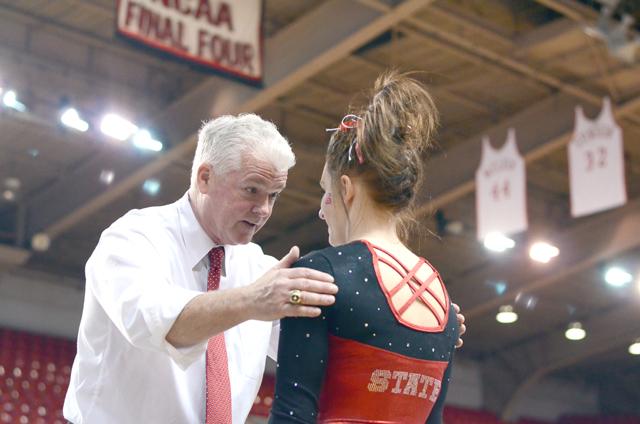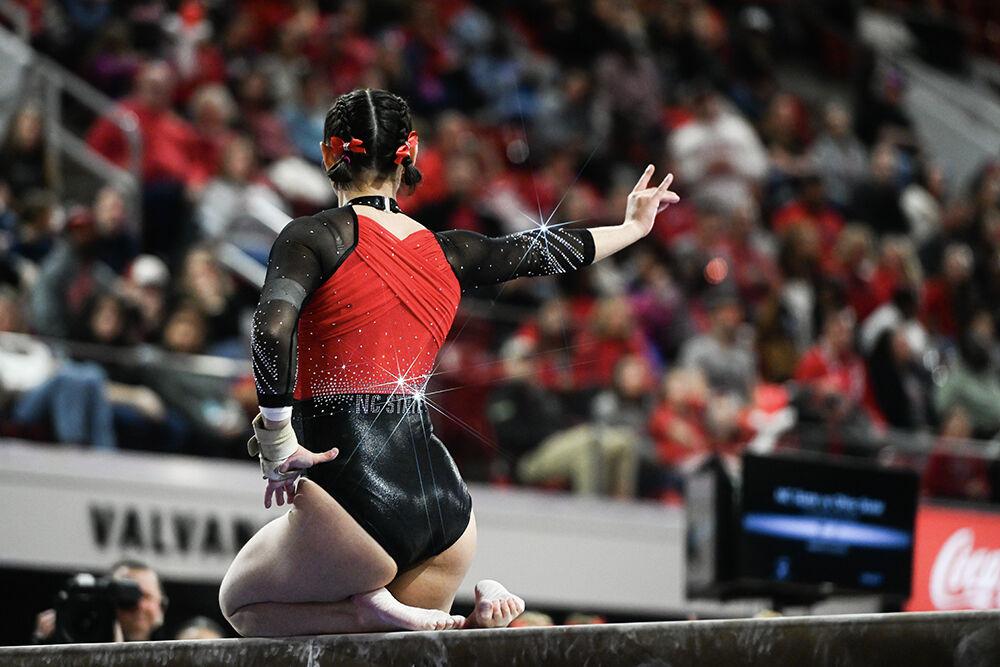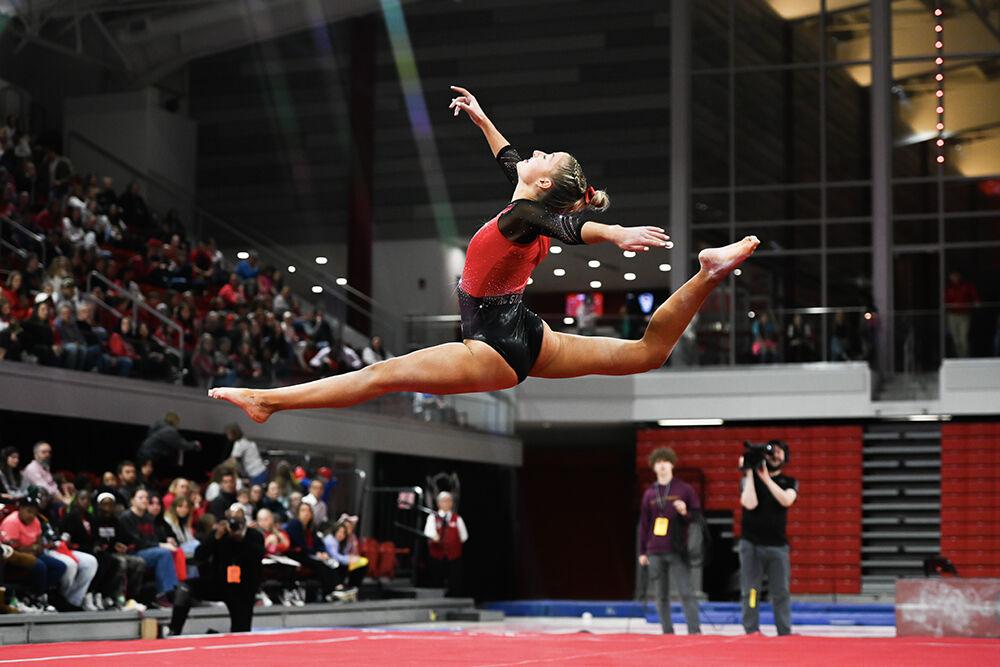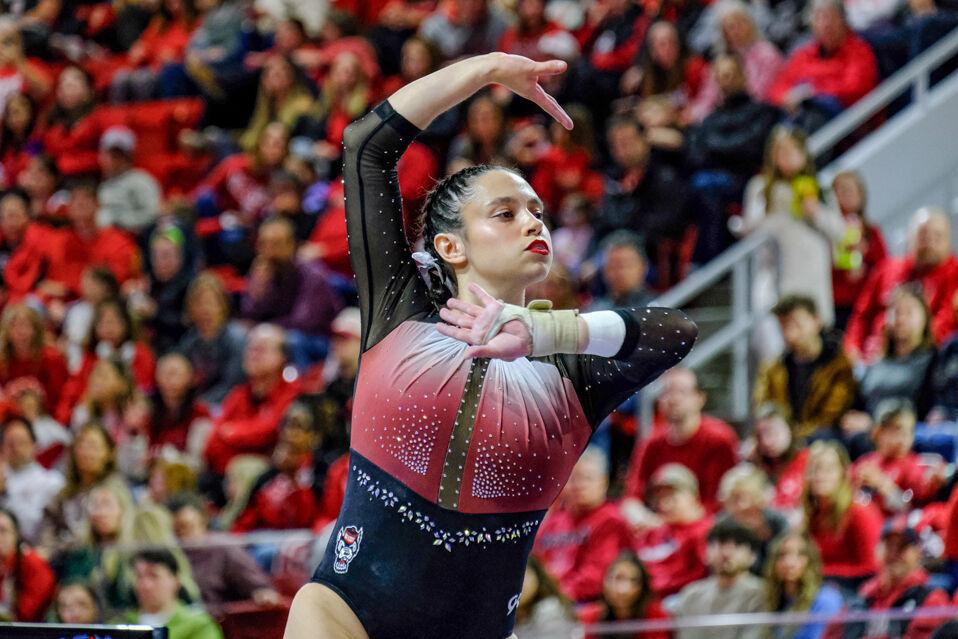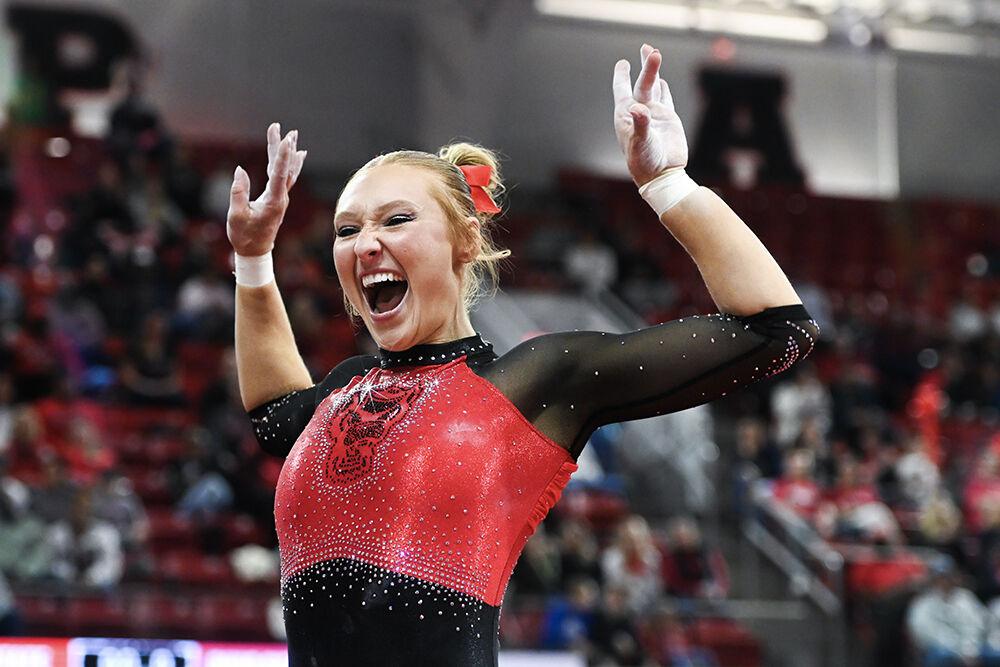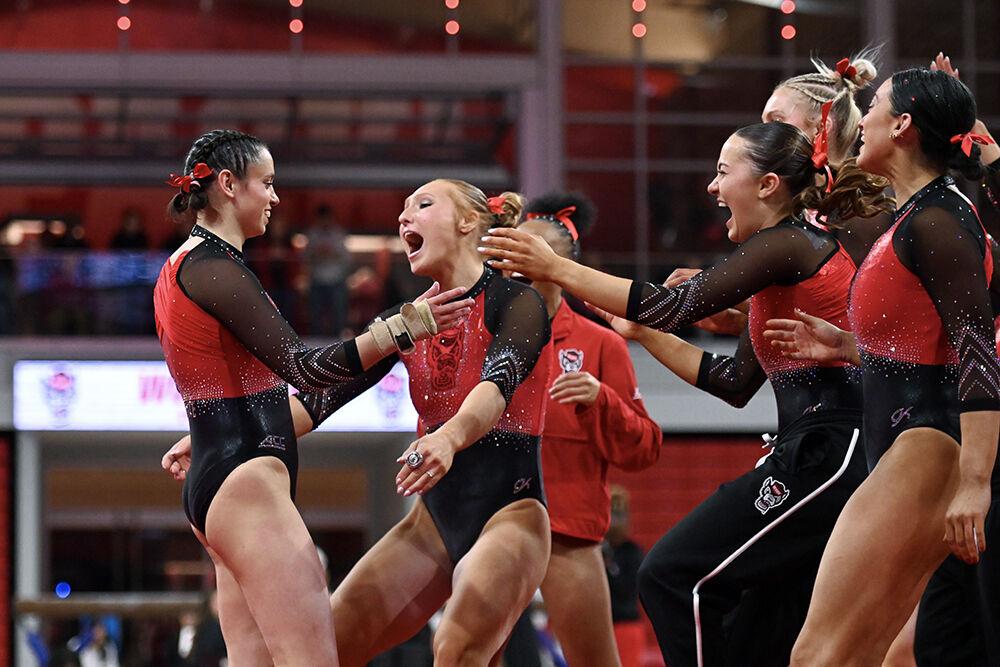Gymnastics head coach Mark Stevenson built N.C. State’s program from the ground up. After being underfunded and unable to compete at a competitive level for nearly a decade, Stevenson has guided the Wolfpack to national prominence.
In recent years, State has competed as one of the top programs in the country. He is a five-time EAGL conference champion. His last conference title came in 2009. Last season Stevenson was the NCAA Regional coach of the year and has won the award four other times.
In his 33rd year with the program, Stevenson surpassed the 500th win mark at a single university at the Sweetheart Invitational Saturday. The total brings him to seventh among active NCAA division I gymnastics coaches for wins at their current schools.
“It’s a real tribute to every kid that’s ever done gymnastics at N.C. State, because you have the work ethic and the time they’ve put in, the directions that they’ve followed and the way they did stuff is really what got me there,” Stevenson said.
When Stevenson arrived at N.C. State in 1980, there were no scholarships awarded to the gymnastics program. Stevenson won the first and only ACC gymnastics title in 1984 and finished as the No. 20 team in the country, but the conference soon fell apart after Duke lost its gymnastics scholarships two weeks after the conference championships. That led to a major setback in the program at State.
“We weren’t a part of the ACC anymore, so that was a real struggle for the next close to 10 years for us to get back to a point where we were competitive, ” Stevenson said.
For that stretch of time State was competing with three scholarship players while other programs had 12 available. Stevenson said he questioned whether he should leave Raleigh and go to a fully-funded program.
“Bottom line was for me, personally, to be successful I had to stay here and build this program to one where people would be interested in it,” Stevenson said.
His hard work began to pay off in 1998 when the Pack finished No. 11 in the country and qualified for the national finals, in which the top-12 teams compete for the national title. The next season the program came one-tenth of a point short of missing nationals.
The Pack returned to national prominence despite being underfunded. Stevenson had eight scholarship athletes while many other programs were suiting 12.
Over the following years the program was able to have 12 athletes on scholarship, but still underfunded as far as budget, according to Stevenson.
“It’s taken the next 10 years after that to get to the point where we’re competitive in a lot of ways with probably from number 12-down financially, how we’re treated at the University, the scholarship base, all of those things combined,” Stevenson said.
The struggle has only made the achievements Stevenson’s garnered over the years and the milestone he’s recently reached even more rewarding.


